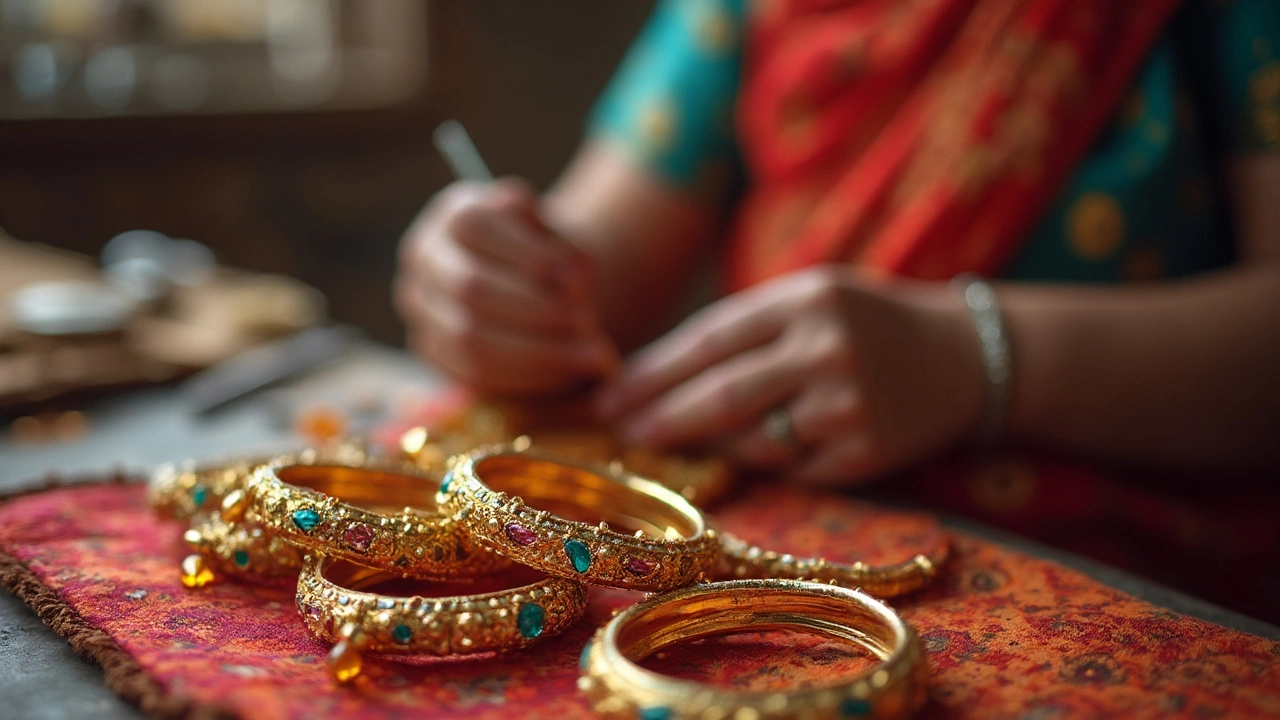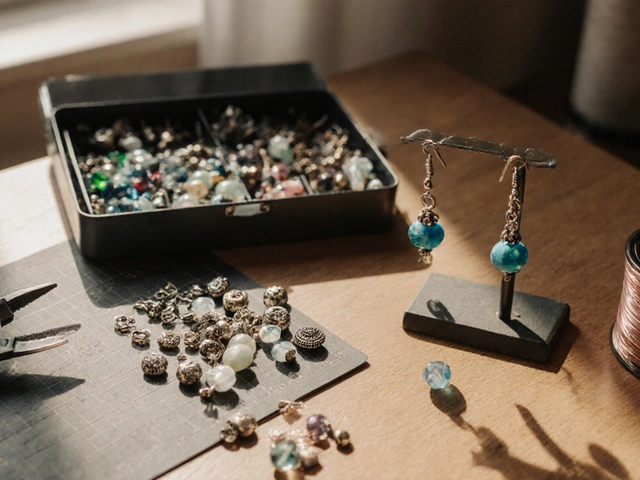Handmade Bangles: Craft, Styles, and Buying Tips
If you love the click of bangles on your wrist, you’ve probably seen the sparkle of a handmade pair. They’re not just accessories; they’re tiny pieces of art made by skilled artisans across India. In this guide you’ll learn what makes a bangle truly handmade, which styles fit different occasions, and how to pick a pair that lasts.
What Sets Handmade Bangles Apart
First off, a handmade bangle is built by hand, not by a machine. That means each piece carries the maker’s touch – a tiny variation in thickness, a subtle swirl in the metal, or a hand‑drawn motif. Most artisans use gold, silver, brass, or copper, and often mix in enamel, glass, or real gemstones. The hallmark of quality is a smooth finish, even weight distribution, and a secure clasp or seamless design that won’t snag.
Because the work is labor‑intensive, prices are higher than mass‑produced bangles. But you also get a story – the region it came from, the technique used, and sometimes even the name of the craftsman.
Popular Handmade Bangle Styles
Traditional gold bangles: Classic 21K or 22K gold bangles with intricate filigree or temple motifs are a staple at weddings and festivals. They’re heavy, so expect a comfortable weight that feels like a reminder of heritage.
Black enamel bangles: These have become a modern favorite. The deep black glaze contrasts beautifully with gold or silver settings, and many designers add tiny pearls or diamonds for a luxe touch.
Beaded mangalsutra bangles: Inspired by the mangalsutra tradition, these bangles feature black beads, ruby studs, or small charms. They’re perfect for everyday wear and add a subtle cultural vibe.
Fabric‑wrapped bangles: Some artisans wrap thin metal tubes with silk, cotton, or hand‑loomed fabrics. The result is a light, colorful bangle that moves with your wrist. Great for casual outings or summer parties.
When you choose a style, think about when you’ll wear it. Heavy gold works best for formal events, while fabric‑wrapped or enamel pieces are easier for daily use.How to Spot Quality Handmade Bangles
Look for these signs before you buy:
- Hallmark stamps: Authentic gold and silver will have BIS or IGI marks indicating purity.
- Even edges: The rims should be smooth, not jagged or sharp.
- Consistent weight: A balanced bangles feels even across your hand.
- Clear craftsmanship: Hand‑etched patterns should be crisp, not blurry.
If you see a cheap magnetic test or a sudden discoloration, the piece might be plated rather than solid.
Caring for Your Handmade Bangles
Keep bangles away from harsh chemicals – soaps, lotions, and perfume can tarnish metal. Wipe them with a soft cloth after wearing, and store each bangle separately to avoid scratches. For gold and silver, a gentle polishing cloth every few weeks works wonders.
Sleeping with bangles is a personal choice. If you do, make sure they’re not too tight; a snug fit can restrict circulation and damage the metal over time.
Finally, consider getting a small insurance appraisal if you invest in high‑value gold bangles. It’s a simple step that protects your treasure.
Handmade bangles blend tradition with personal style. Whether you’re looking for a bold black enamel piece or a delicate gold filigree, the right pair can become a cherished part of your wardrobe. Use these tips, trust your instincts, and enjoy the click of authentic craftsmanship on your wrist.
Why Are Bangles So Expensive? Real Reasons & Behind-the-Scenes Insights
Explore the reasons why bangles are expensive. Dive deep into material costs, craftsmanship, tradition. Learn tips for smart buying and real-life stories.





